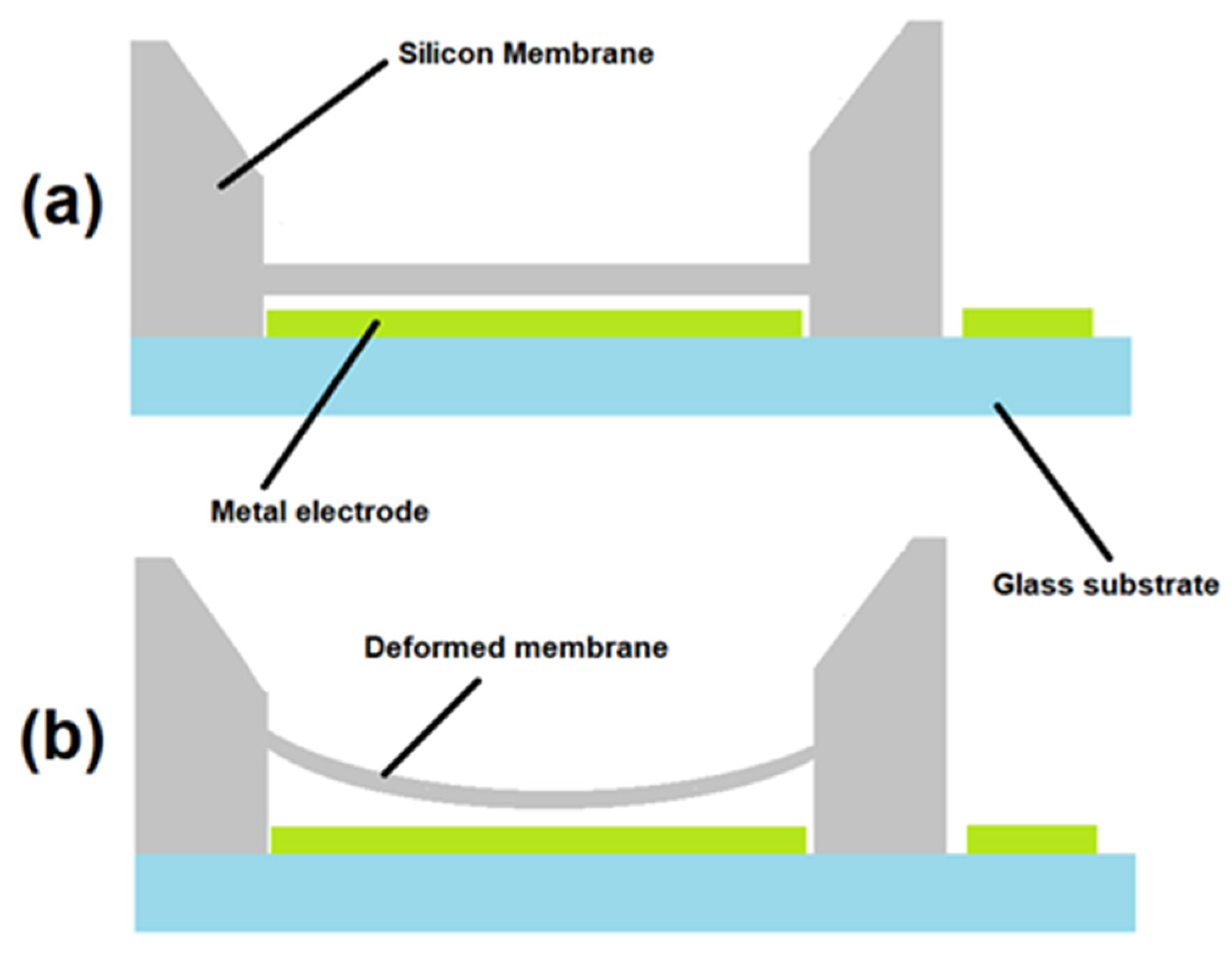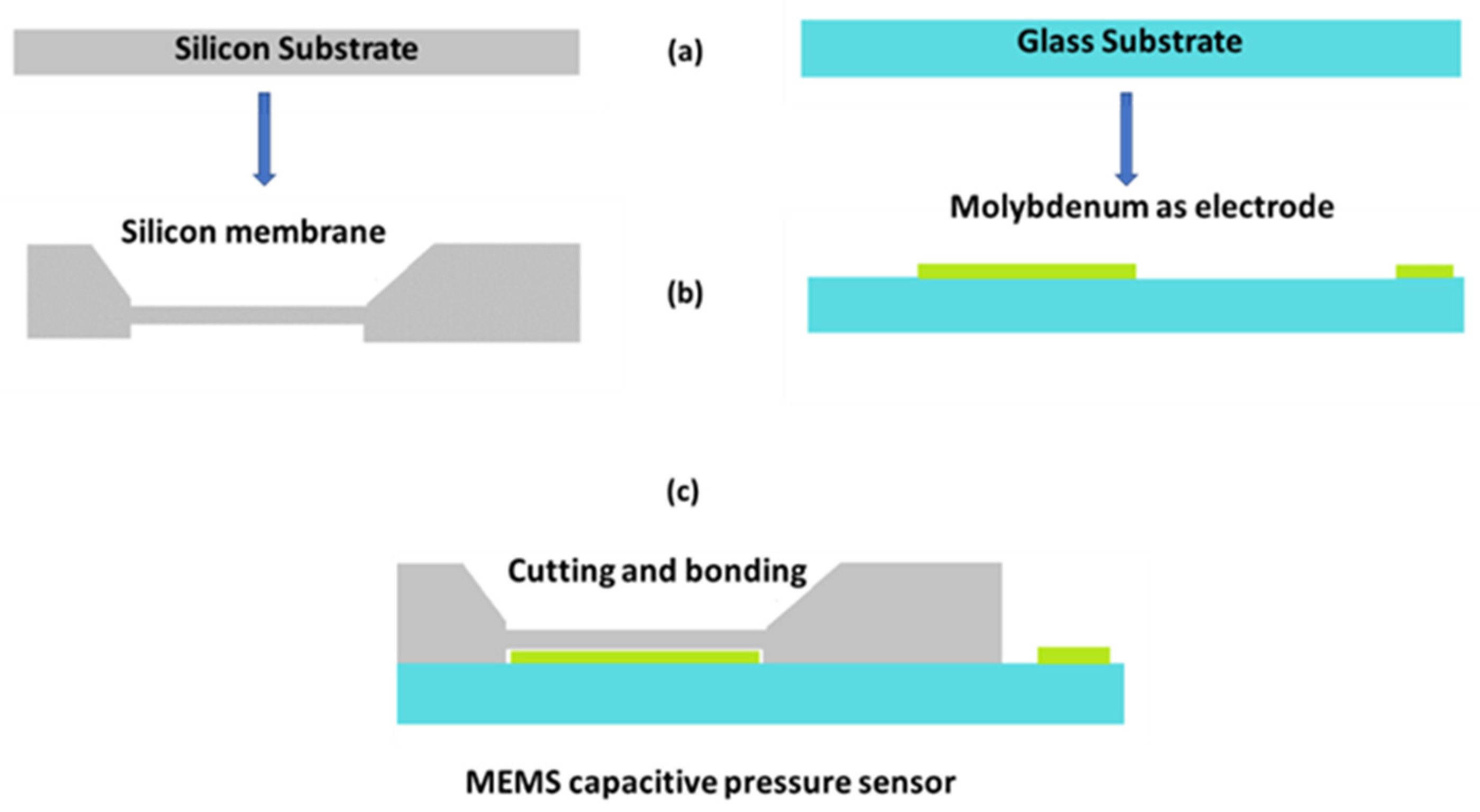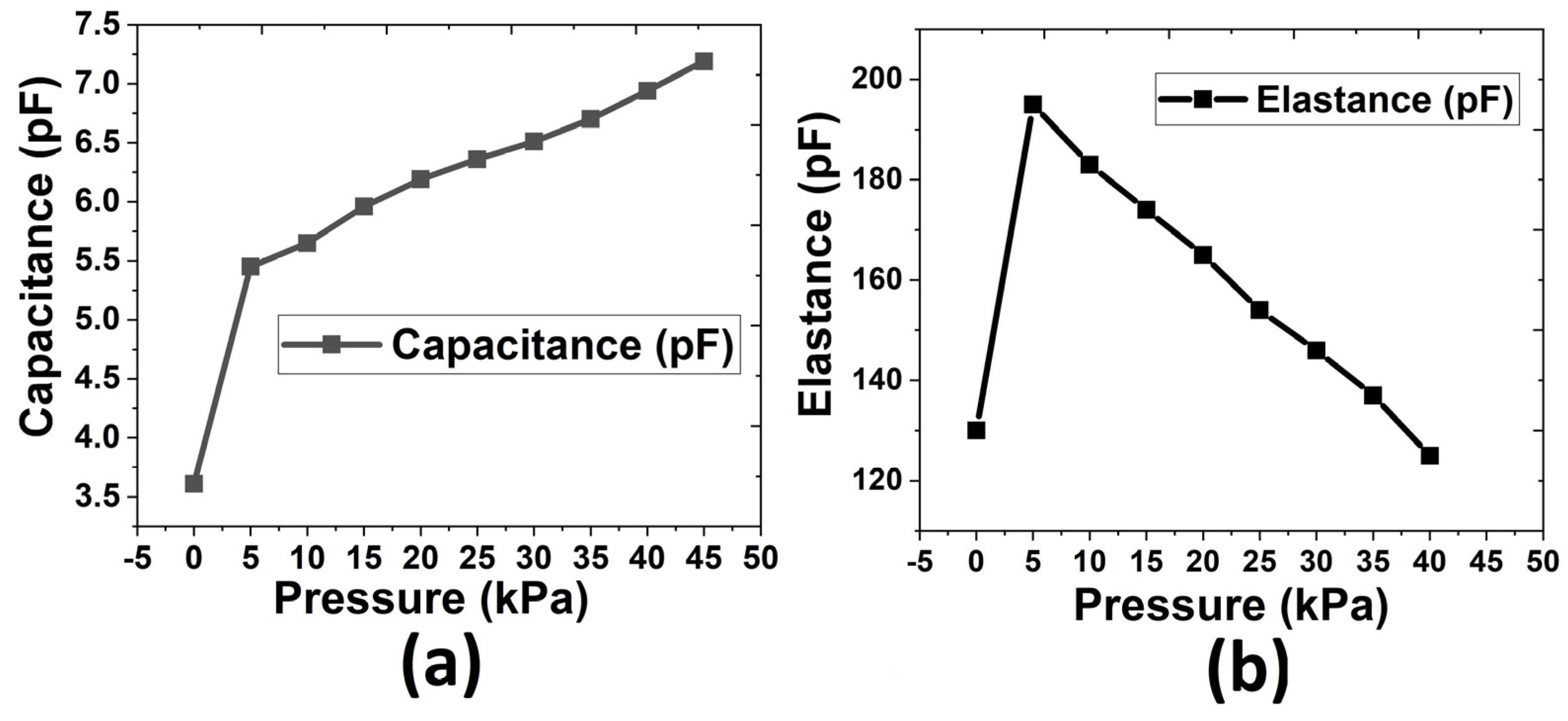Development of a Novel Silicon Membrane MEMS Capacitive Pressure Sensor for Biological Applications †
Abstract
:1. Introduction
2. Fabrication Process
3. Results and Discussion
4. Conclusions
Funding
Institutional Review Board Statement
Informed Consent Statement
Data Availability Statement
Conflicts of Interest
References
- Abdul, B.; Mastronardi, V.M.; Qualtieri, A.; Guido, F.; Algieri, L.; Rizzi, F.; De Vittorio, M. Design, Fabrication and Characterization of Piezoelectric Cantilever MEMS for Underwater Application. Micro Nano Eng. 2020, 7, 100050. [Google Scholar] [CrossRef]
- Abdul, B.; Mastronardi, V.M.; Qualtieri, A.; Algieri, L.; Guido, F.; Rizzi, F.; De Vittorio, M. Sensitivity and Directivity Analysis of Piezoelectric Ultrasonic Cantilever-Based Mems Hydrophone for Underwater Applications. J. Mar. Sci. Eng. 2020, 8, 784. [Google Scholar] [CrossRef]
- Available online: http://www.vti.se/ (accessed on 8 May 2023).
- Available online: https://www.fujielectric.com/ (accessed on 8 May 2023).
- Basov, M. Pressure Sensor with Novel Electrical Circuit Utilizing Bipolar Junction Transistor. In Proceedings of the 2021 IEEE Sensors, Sydney, Australia, 31 October–3 November 2021; pp. 1–4. [Google Scholar] [CrossRef]
- Guan, T.; Yang, F.; Wang, W.; Huang, X.; Jiang, B.; Zhang, D. The Design and Analysis of Piezoresistive Shuriken-Structured Diaphragm Micro-Pressure Sensors. J. Microelectromech. Syst. 2017, 26, 206–214. [Google Scholar] [CrossRef]
- Xu, T.; Lu, D.; Zhao, L.; Jiang, Z.; Wang, H.; Guo, X.; Li, Z.; Zhou, X.; Zhao, Y. Application and Optimization of Stiffness Abruption Structures for Pressure Sensors with High Sensitivity and Anti-Overload Ability. Sensors 2017, 17, 1965. [Google Scholar] [CrossRef] [PubMed]
- Wang, S.; Feng, Y. Micro capacitive vacuum sensor based on MEMS. In Proceedings of the 2010 IEEE 5th International Conference on Nano/Micro Engineered and Molecular Systems, Xiamen, China, 20–23 January 2010; pp. 1160–1164. [Google Scholar] [CrossRef]
- He, F.; Huang, Q.-A.; Qin, M. A silicon directly bonded capacitive absolute pressure sensor. Sens. Actuators A Phys. 2007, 135, 507–514. [Google Scholar] [CrossRef]
- Tanaka, S. Wafer-level hermetic MEMS packaging by anodic bonding and its reliability issues. Microelectron. Reliab. 2014, 54, 875–881. [Google Scholar] [CrossRef]
- Esashi, M. Encapsulated micromechanical sensors. Microsyst. Technol. 1994, 1, 2–9. [Google Scholar] [CrossRef]



Disclaimer/Publisher’s Note: The statements, opinions and data contained in all publications are solely those of the individual author(s) and contributor(s) and not of MDPI and/or the editor(s). MDPI and/or the editor(s) disclaim responsibility for any injury to people or property resulting from any ideas, methods, instructions or products referred to in the content. |
© 2023 by the author. Licensee MDPI, Basel, Switzerland. This article is an open access article distributed under the terms and conditions of the Creative Commons Attribution (CC BY) license (https://creativecommons.org/licenses/by/4.0/).
Share and Cite
Abdul, B. Development of a Novel Silicon Membrane MEMS Capacitive Pressure Sensor for Biological Applications. Eng. Proc. 2023, 48, 54. https://doi.org/10.3390/CSAC2023-15170
Abdul B. Development of a Novel Silicon Membrane MEMS Capacitive Pressure Sensor for Biological Applications. Engineering Proceedings. 2023; 48(1):54. https://doi.org/10.3390/CSAC2023-15170
Chicago/Turabian StyleAbdul, Basit. 2023. "Development of a Novel Silicon Membrane MEMS Capacitive Pressure Sensor for Biological Applications" Engineering Proceedings 48, no. 1: 54. https://doi.org/10.3390/CSAC2023-15170
APA StyleAbdul, B. (2023). Development of a Novel Silicon Membrane MEMS Capacitive Pressure Sensor for Biological Applications. Engineering Proceedings, 48(1), 54. https://doi.org/10.3390/CSAC2023-15170




